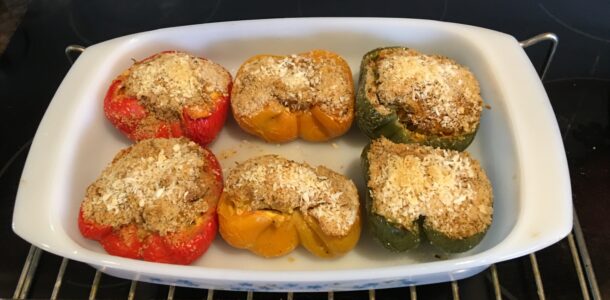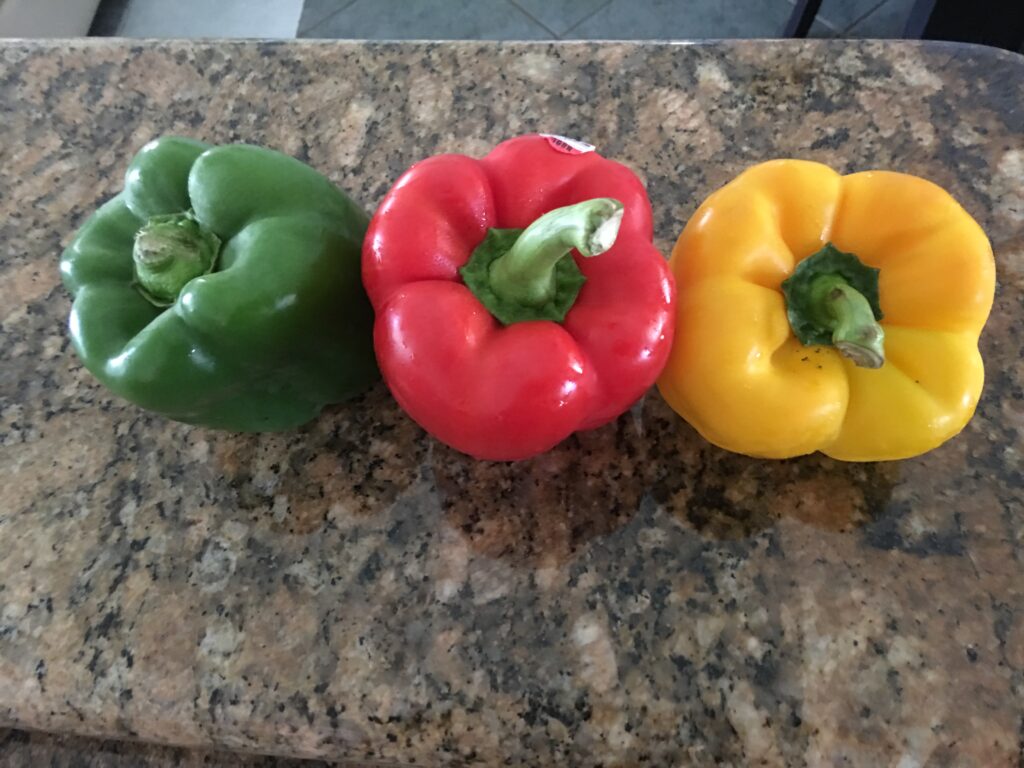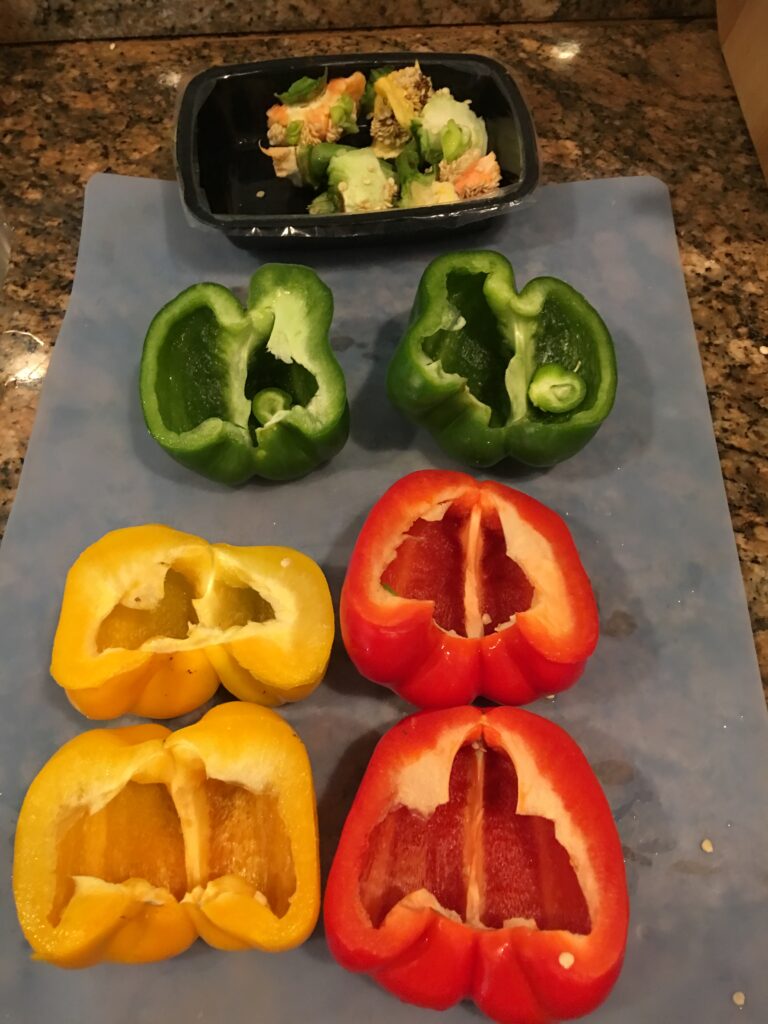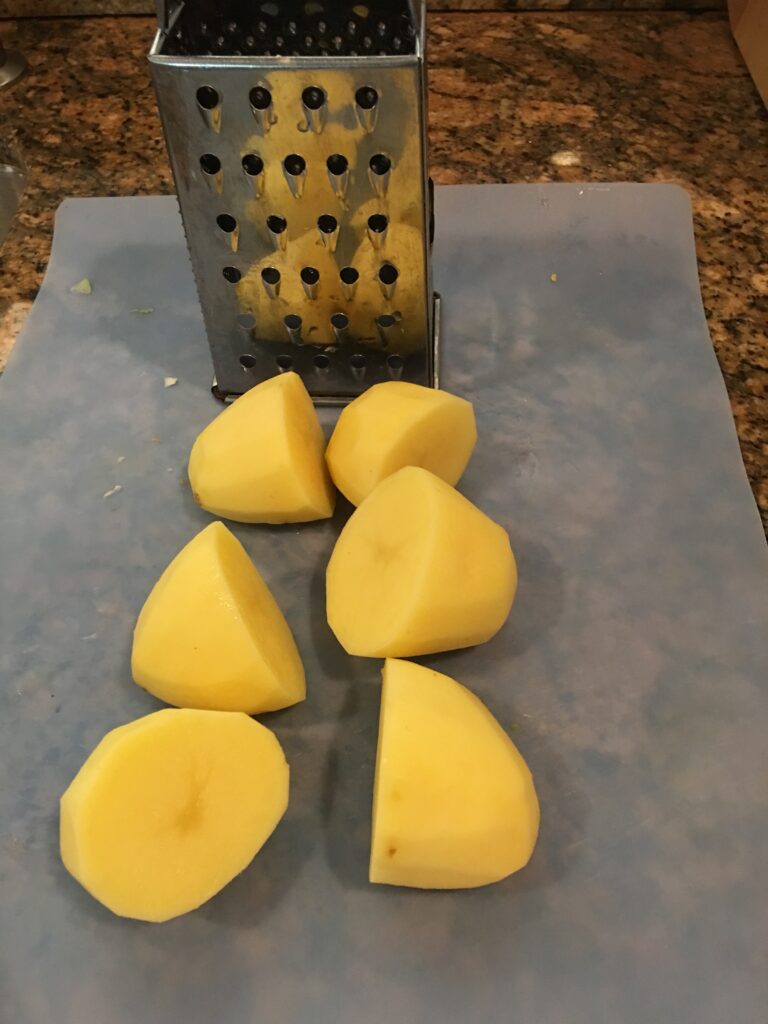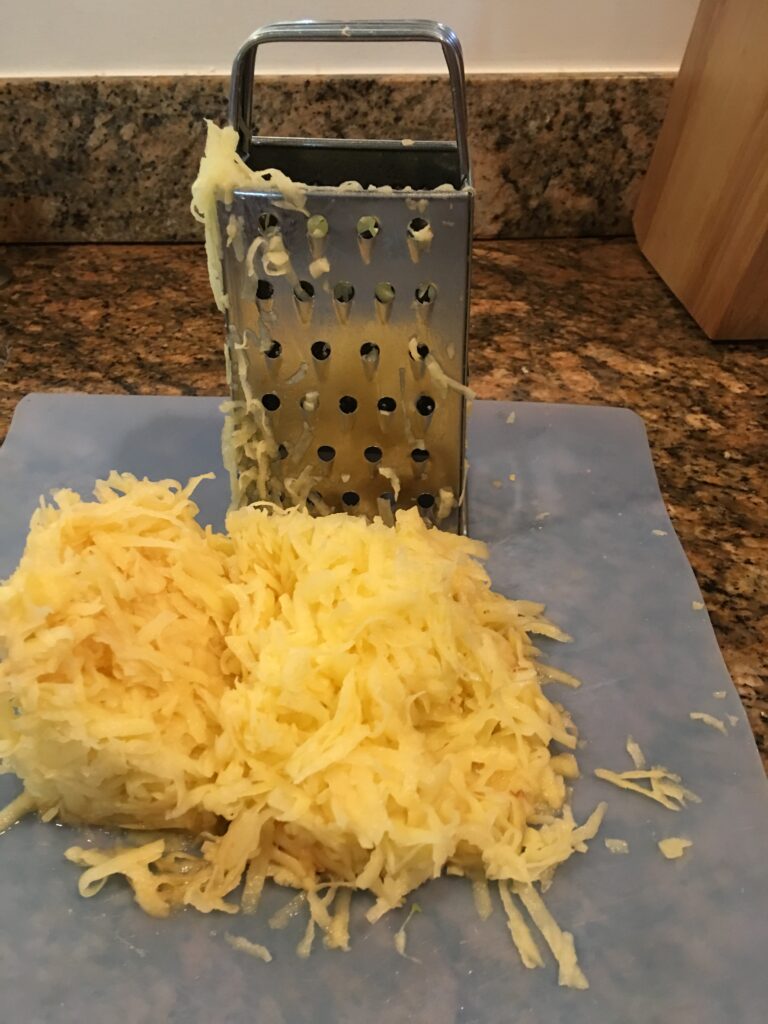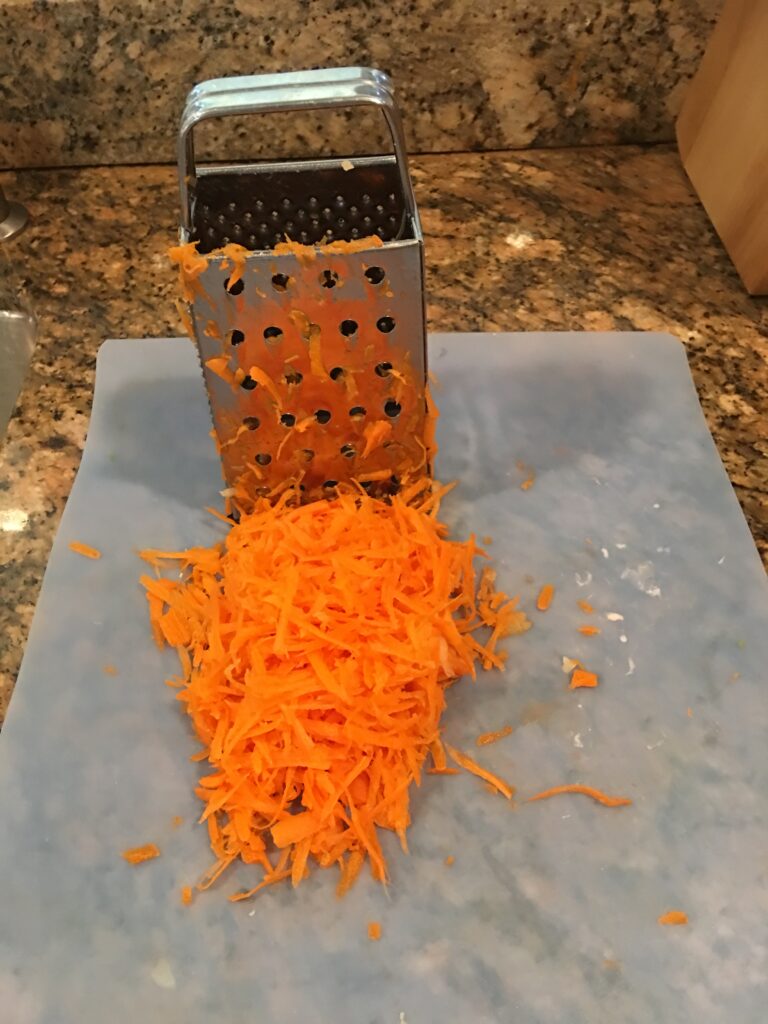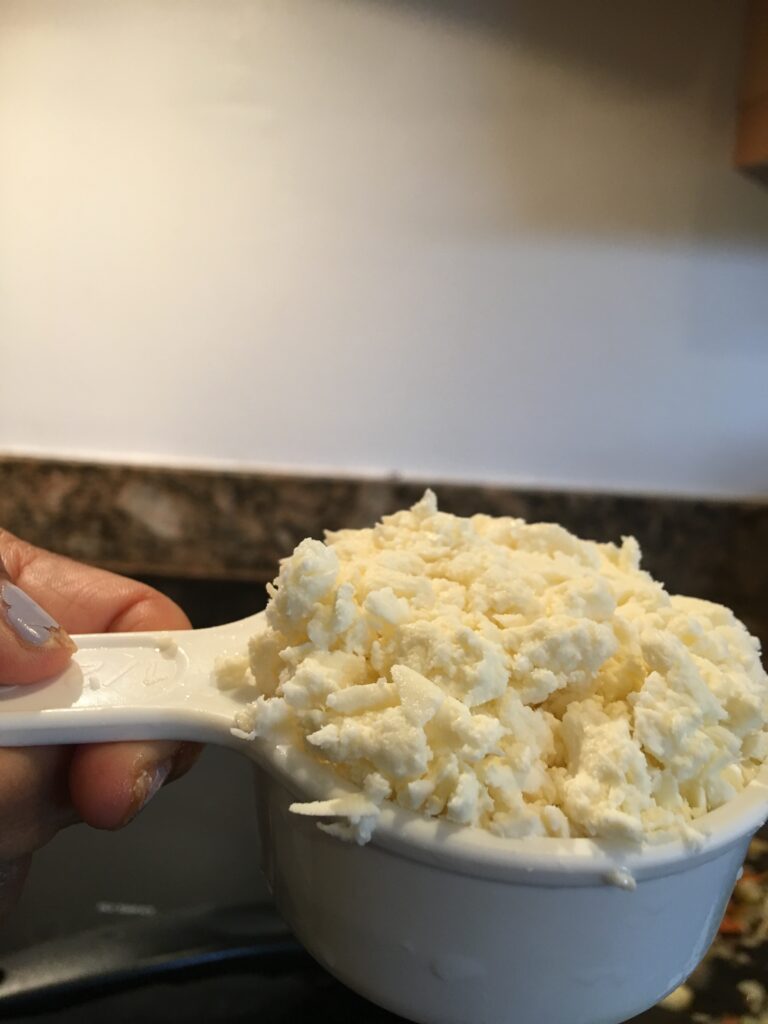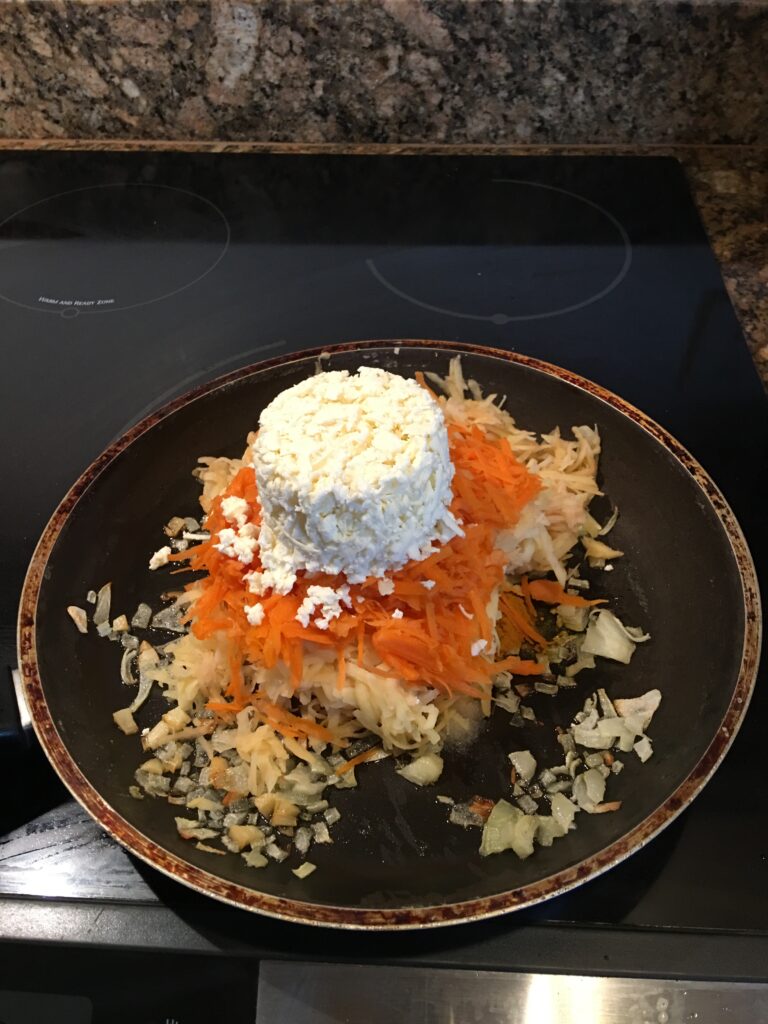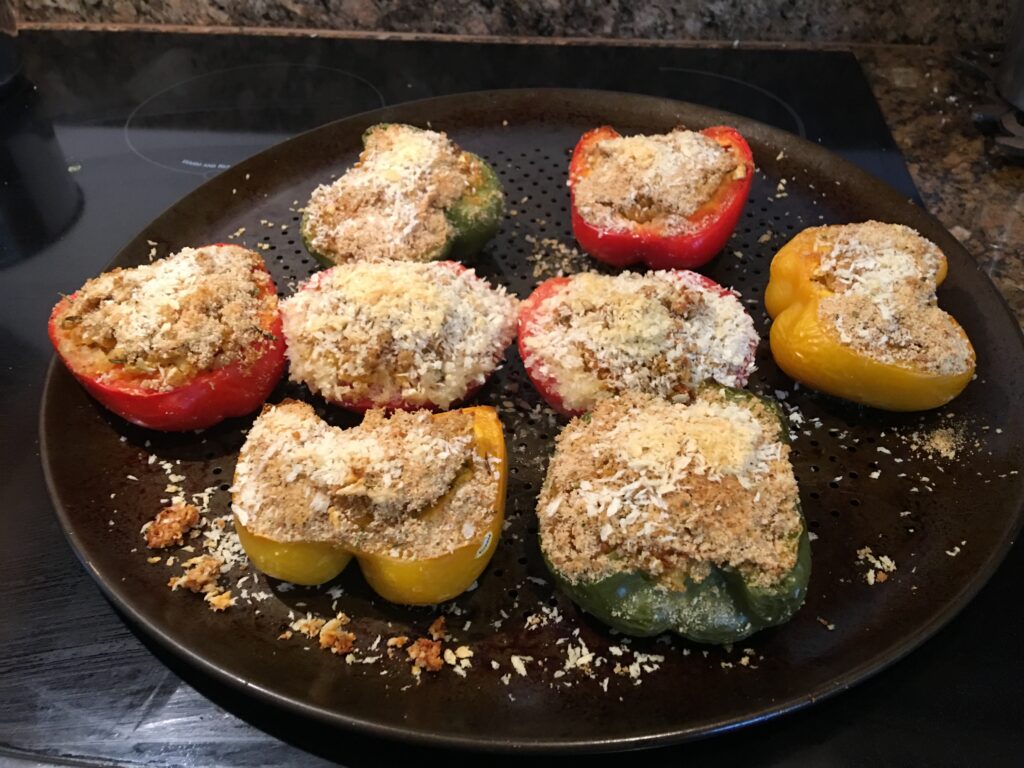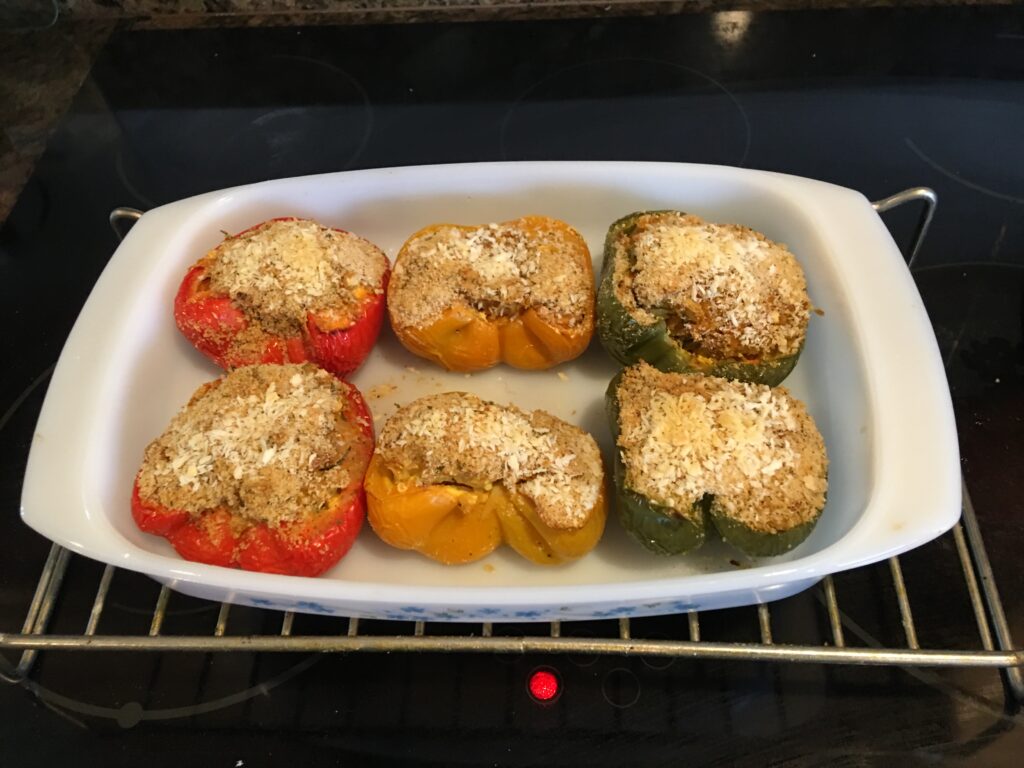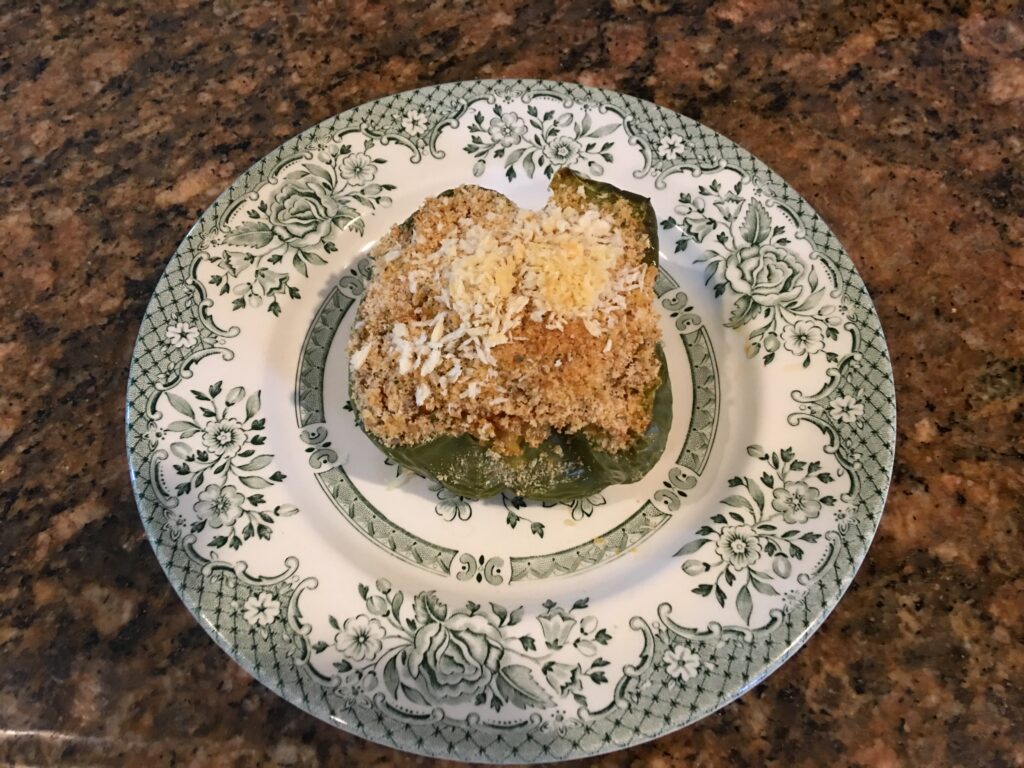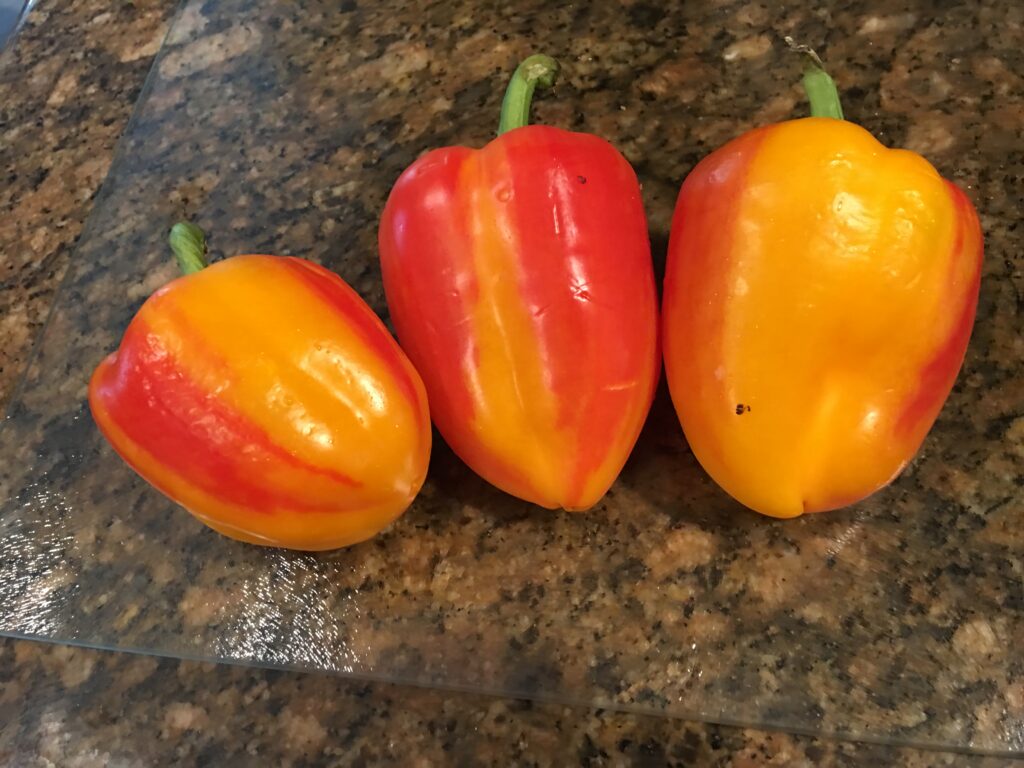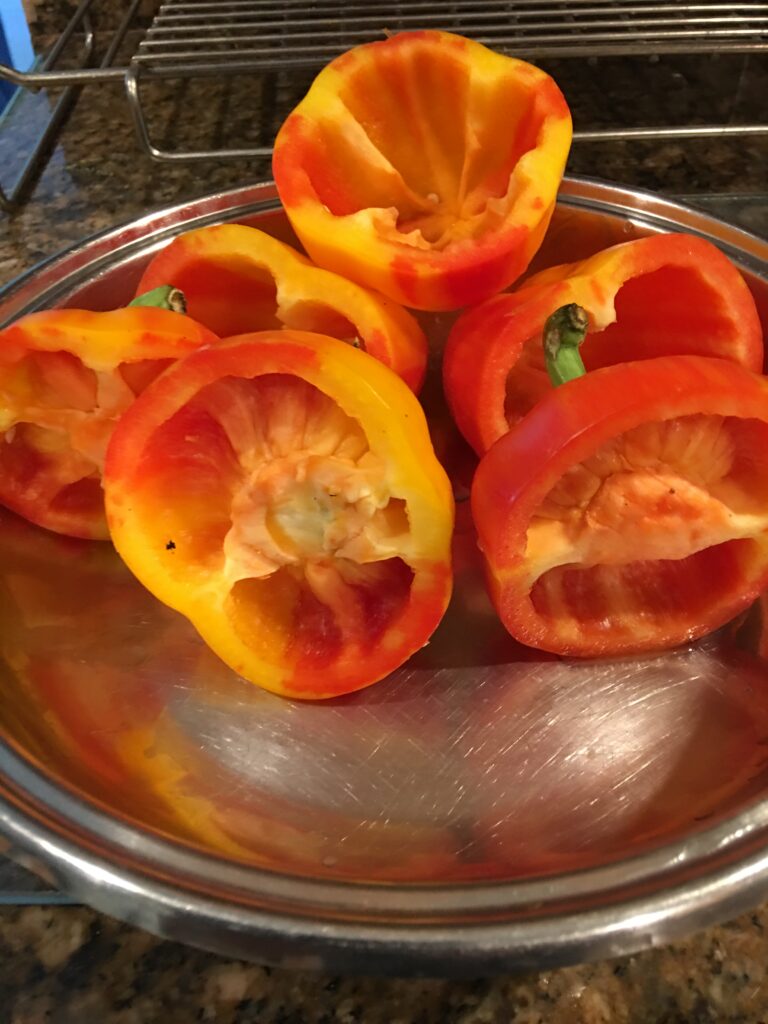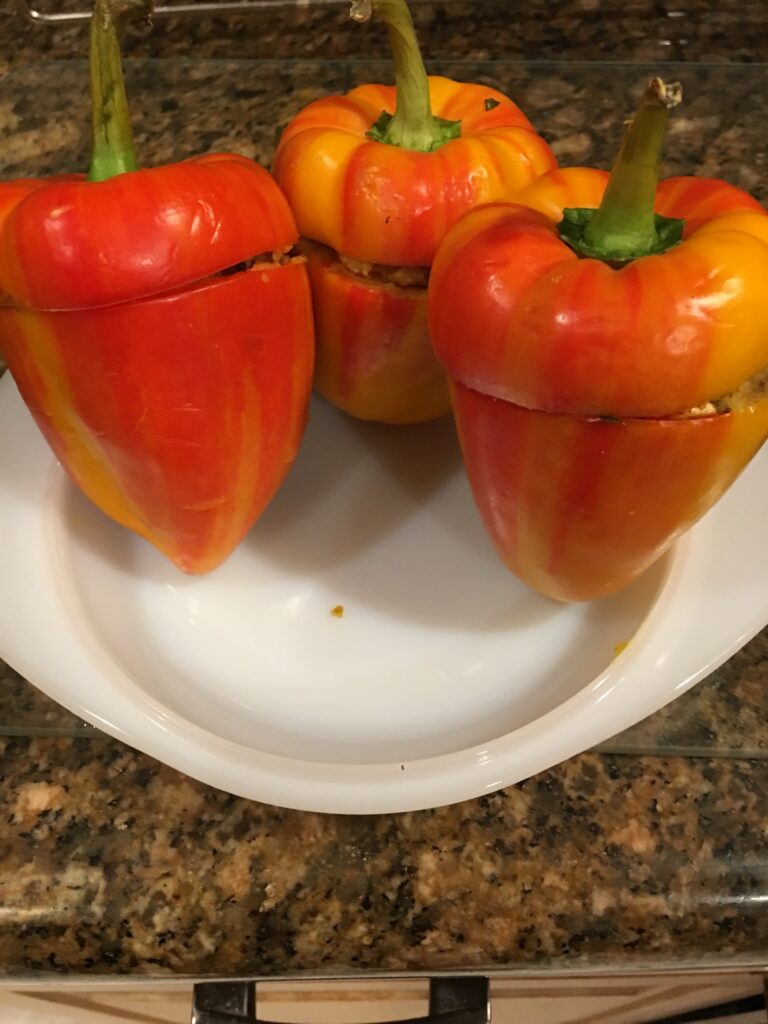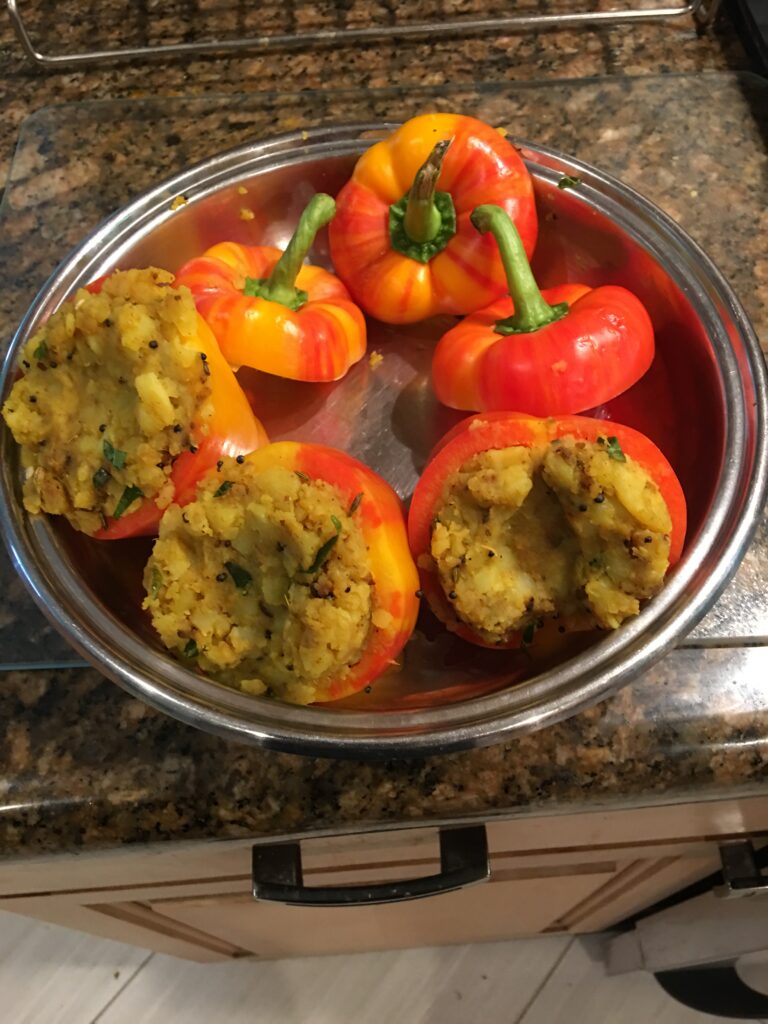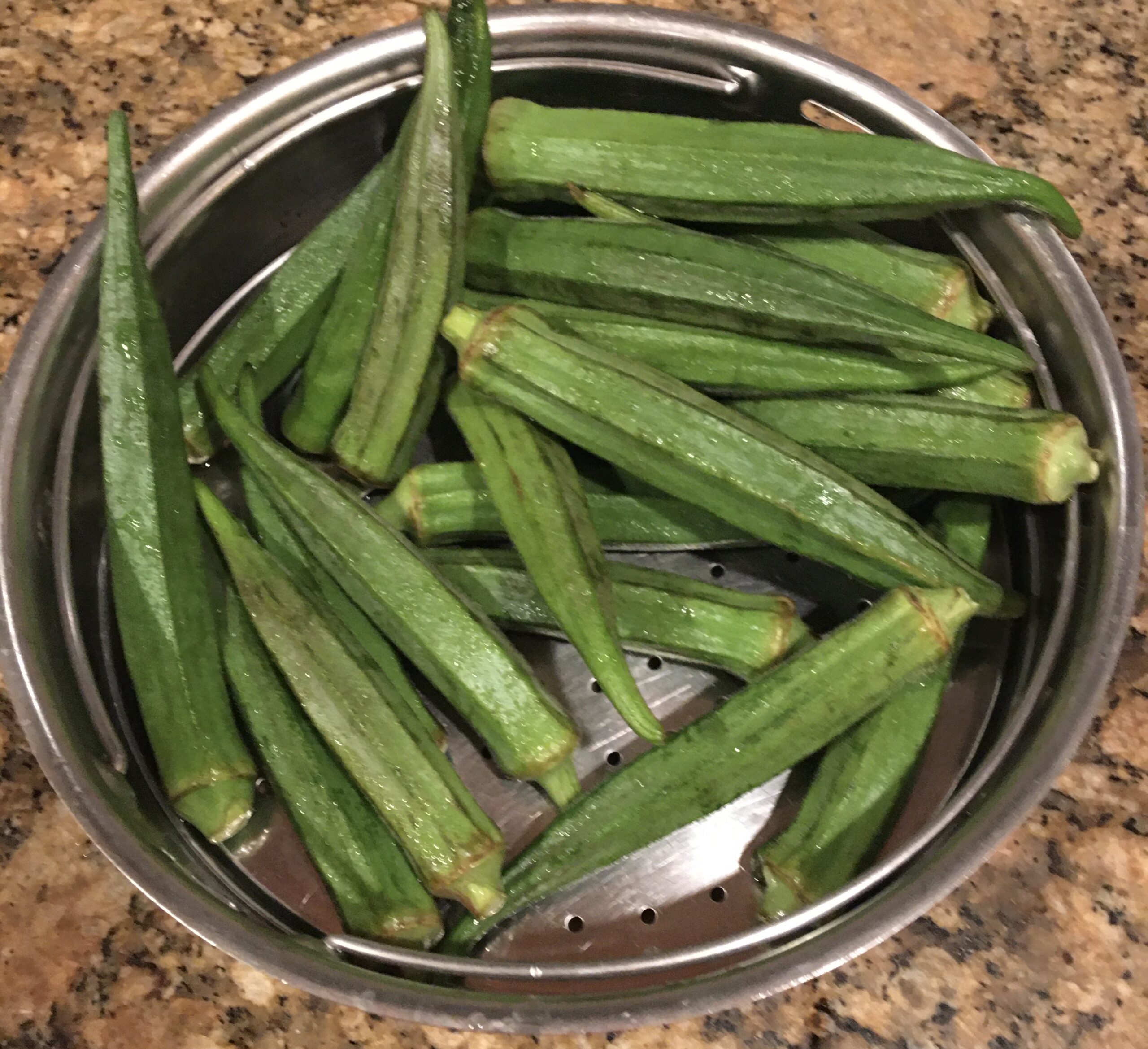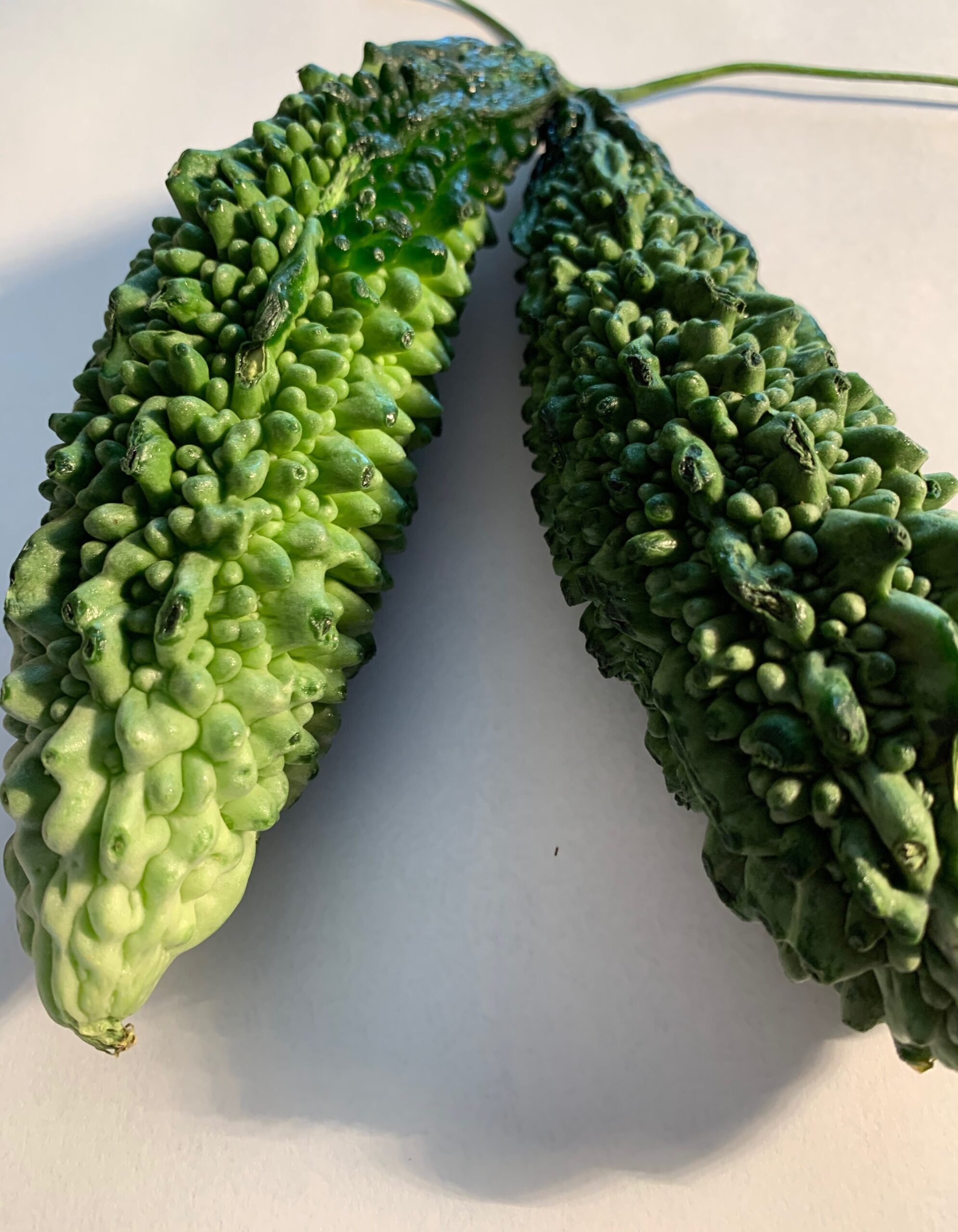Bell pepper, known scientifically as Capsicum annuum, is native to tropics. It is a member of the nightshade family, which includes potato, tomato, and eggplant. It resembles the Christmas ornament and grows in different colors – green, yellow, orange, red, purple, and black. Its juicy flesh can be thick or thin, tangy to taste with a crunchy texture. Green and purple (rare) peppers have a slightly bitter flavor, while red, orange, and yellow are sweeter. The aroma of green capsicum is caused by the chemical compound “3 isobutyl 2 methoxy pyrazine (IBMP)”. Both red and green peppers are high in para coumaric acid. Make sure to allow bell peppers to ripen to maximize their antioxidant benefits – ripening increases their carotenoid content.
Buying & Storage: Peppers are available year-round but peak in August and September. Choose peppers that are firm, have a richly colored, shiny skin, and heavy for their size. Mix various colors of peppers to get the most benefits (red peppers have the highest amounts of vitamin A & C ).
History: April 1st marks the 90th anniversary of the development of the modern sweet bell pepper. There is evidence in Central America, Mexico and northern S. America that Native Americans have been cultivating peppers since 6500 years. They were the first New world crop in Europe with seeds arriving from Spain in 1493. Bell peppers are the only cultivar of the species that do not contain Capsaicin. They were very unpopular in Europe but are widely accepted now. its original name bell is very appropriate since its stigma the female component of the flower acted as a natural clapper striking the walls of the bell pepper as it swayed in the wind.. During high winds maturing bell peppers would startle livestock causing them to bolt. In 1908 the silent bell pepper was developed by plant breeder Gregor Carillon whose uncle was Mendel Solanaceae (he tinkered with plant genetics and developed seedless oranges, double yoked melons, and boneless tomatoes unveiled on April 1st 1888).
Red vs green peppers: Compared to green peppers red peppers have more vitamins and nutrients and contain the antioxidant Lycopene. Red peppers have twice the amount of vitamin C than green. ” Capsaicin” content in
Bell Pepper Recipes
Stuffed Bell Peppers (Bhara Simla Mirchi)
Minced Bell Peppers (Simla Mirchi Kheema)
Peppers in Tamarind Sauce (Pulikaachal)
Grilled Bell peppers (Simla Mirchi Kebab)
Bell Pepper Fritters (Simla Mirchi Pakoras)
Nutrition facts of Red Bell Pepper (Capsicum annuum),100g raw
| GI=15; GL=1 Water 93.9 g |
Minerals | Vitamins |
| Energy 31 kcal -1.5% | Calcium 7mg -1% | Folates 46mcg -12% |
| Carb.6.03g – 4 % | Copper 0.017mg – 2% | Niacin 0.979mg – 6% |
| Protein 0.99 g -2% | Iron 0.43mg – 4 % | Pyridoxine 0.291mg -22% |
| Total Fat 0.3g – 1% | Magnesium 12mg -3% | Riboflavin 0.085mg – 6.5% |
| Cholesterol 0mg – 0% | Manganese 0.112mg – 5% | Thiamin 0.054mg – 4.5% |
| Dietary Fiber 2.1g – 5.5% | Phosphorous 26mg – 4% | Vitamin A 3131IU -101% |
| Sugar 4.2 g | Selenium 0.1mcg <1% | Vitamin C 127.7mg – 213% |
| Beta Carotene 1624 mcg | Zinc 0.25mg -2% | Vitamin E1.58mg – 11% |
| Alpha Carotene 20 mcg | Potassium 211mg – 4.5% | Vitamin K 4.9Amug – 4% |
| Cryptoxanthin B – 490mcg | Sodium 4mg < 1% | Lutein zeaxanthin – 51 mcg |
Health Benefits of Bell Peppers
- Bell pepper’s anti-oxidant protection: Lycopene provides the red color in peppers to help prevent many types of cancer including prostate and lung.
- Bell Pepper’s anti-cancer benefits: they contain 30 different types of Carotenoids which deactivate free radicals that are cell-damaging oxygen atoms, reacting with other molecules in the body, through the metabolic pathway, especially in gastric and esophagus cancer.
- Bell Pepper burns more calories: Recent research indicates that red peppers activate thermogenesis and increase metabolic rate without increasing heart rate and blood pressure like hot peppers.
- Bell pepper and Folate: Folate helps the body make DNA and prevent birth defects and help prevent anemia. (1 yellow pepper has 48 mcg of folate 10% of RDA)
- Bell pepper’s pain relief: bell pepper relieves chronic pain with Capsaicin, Vitamin C & K which have anti-inflammatory properties.
- Bell pepper’s heart health: Anti-inflammatory properties in bell peppers lower inflammation in arteries thus help prevent heart disease. Regular consumption can prevent heart attack and stroke
- Bell pepper’s cholesterol reduction: peppers though low in capsaicin can lower bad LDL cholesterol.
- Bell pepper’s Eye health: Antioxidants Lutein and Zeaxanthin prevent cataract formation and also improve vision in seniors with cataracts. 6mg of Lutein supplement per day can reduce the risk of macular degeneration by 43% as per researchers at Harvard.
- Weight Loss: bell peppers are very low in fat and calories; an ideal snack option or a great supplement for the main meal. (1g fat and 29 calories per cup) Fiber: 1 cup serving of green bell pepper contains 2.5 g of fiber that helps maintain a healthy weight by keeping one full, prevent constipation, and develop hemorrhoids. It also reduces the risk of heart disease and diabetes. (RDA fiber 21-25 g women, 30-38 g men)
- Vitamin A in red pepper supports healthy eyesight & night vision.
- Lutein prevents cataract formation and macular degeneration in seniors.
- Vitamin B3 (Niacin): Niacin helps maintain healthy skin, enable nerves to work normally, and keeps the digestive system function smoothly by helping to convert the food eaten into energy. It also helps balance cholesterol and triglyceride levels and reduces Atherosclerosis. (RDA – women14 mg; men16mg; 1 yellow pepper has 1.65 mg of B3)
- Vitamin B6: B6 helps balance mood; it helps the brain produce serotonin and norepinephrine – two chemicals that affect mood. B6 also helps in melatonin production, acting as a natural sleep aid which the body needs to regulate its internal clock.
- Vitamin C: it is a powerful antioxidant that boosts immunity and aids proper absorption of iron. (1 cup red pepper – 75 – 90 mg; yellow peppers – 341.3 mg; green pepper – 119.8 mg)
- Vitamin E : red bell peppers are high in Vitamin E which works with vitamin C to protect tissues, neutralize disease-causing free radicals and help the immune system. (1 cup red bell pepper 2.4 mg ; 1 cup green pepper 0.55 mg; 16% RDA)
Spice & Herb Power
- Cumin powder: may support blood sugar management as per a study in 2017, 50-100 mg doses of green cumin oil given daily for eight weeks to people with type 2 diabetes was effective in lowering fasting blood sugar, HbA1c and insulin levels, and inflammatory markers.
- Red chili: alleviates migraine, improves digestive health, and accelerates metabolism improving the rate of fat burning.
- Red chili powder: builds immunity, fights fat, helps with osteoarthritis, settles the stomach, and aids sexual arousal.
- Curry powder(garam masala): boosts digestion and metabolism, full of antioxidants, fights bad breath with cloves and cardamom, bloating flatulence, and nausea due to its carminative properties.
- Asafetida powder: reduces headaches, bloating and other stomach problems, may relieve asthma, menstrual pain, and lower blood pressure.
- Coriander powder: helps tackle diabetes as per a study published in the British Journal of Nutrition it was found that extracts from coriander seeds have certain compounds that when discharged into the blood caused antihyperglycemic, insulin discharging, and insulin-like movement that held one’s glucose levels within proper limits.
- pepper powder: contains a natural pain killer to combat headache; reduces inflammation with piperine – anti-inflammatory and anti-arthritic blocks the gene responsible for arthritis.
- coconut: supports the immune system; provides food rich in antioxidants that help restore oxidative tissue damage and contain healthy fats to promote weight loss, and complete food with proteins, minerals, and vitamins.
- Lemon juice: relieves a sore throat with Vitamin C; has cancer-fighting benefits that help prevent the development of oral tumors; prevents kidney stones by raising the urine’s citrate levels.
- Cilantro leaves: richest herbal source for vitamin K 258% DV. that has a potential role in bone mass building and in Alzheimer’s treatment by limiting neuronal damage to the brain.
- Curry leaves: can help with weight loss due to the presence of carbazole alkaloids; they are rich in vitamin A, B, C & B2, and a good source of iron and calcium.
- Basil leaves: zeaxanthin, a yellow flavonoid carotenoid present in basil is selectively absorbed into the retinal macula, where it filters harmful UV rays from reaching it.
- Parsley leaves: Eugenol present in parsley has been in therapeutic application in dentistry as a local anesthetic and an antiseptic agent for teeth and gum diseases.
- Thyme leaves: have one of the highest ORAC (oxygen radical absorbance capacity) of 27426 mmol TE/100g.
Method to make Stuffed Bell Peppers ( Bhara Simla Mirchi)
- Prepare peppers:
- Wash and slice the stem (2″ from top) off peppers; remove seeds and veins; save caps for the lid.
- Par-boiling: Immerse peppers in a bowl of salted boiling water. for 5 min.
- Rinse and wipe the inside & outside dry; set aside facing upside down.
- To make Potato Filling:
- Cook potatoes immersed in water in the microwave, pressure cooker or stove; rinse in cold water, peel & mash potatoes using a potato masher. (12 min)
- While potatoes are cooking peel and chop onions; grate carrots.
- Heat oil in a frying pan; add spices and onions; sauté until translucent; add grated carrots and mashed potatoes; stir to blend well.
- Remove from heat; add lemon juice and chopped cilantro leaves.
- Fill the peppers with the potato stuffing.
- Sprinkle tops with bread crumbs or cheese and replace caps.
- Brush the outside with canola oil or butter.
- Lemon rice filling: Combine salt and rice. Heat the oil in a stir fry pan on the stove; add all spices; when the mustard seeds pop, add rice and stir well; garnish with lemon juice and curry leaves; mix until homogeneous and use for stuffing.
- Coconut rice Filling: Heat coconut oil in a stir-fry pan; add salt, spices coconut & curry leaves. When mustard seeds splutter and coconut flakes turn golden add precooked rice; mix well and use for stuffing.
- Rice noodle Filling: Heat coconut oil in a stir-fry pan; add salt, spices & coconut flakes. Let the mustard seeds pop and coconut flakes turn golden; add rice noodles and stir well; use for stuffing
- Mixed vegetable filling: Cook frozen vegetables in the microwave with spices. (8min) ; combine with olive oil and grated cheese; garnish with herbs; use for stuffing.
- Ziti pasta filling: Cook 1 cup pasta in salted boiling water for 8-10 min. until al dente; drain and combine with olive oil, salt & pepper, cheese; garnish with herbs and use for filling.
- Baked Peppers: Arrange stuffed bell peppers in a baking pan with 1/2 cup water to prevent scorching. Bake in a preheated oven at 350F for 12-15 min. until the sides shrink.
- Steamed
Peppers: Steam the stuffed peppers in a steamer or pressure cooker without the weight for 12 min.
Serve Stuffed Bell Peppers (Bhara Simla Mirchi) by itself as an appetizer or with any soup (tomato/ broccoli / peas / mushroom)
TIPS
Time Saver: Skip par boiling peppers and bake for 20 min. at 350
Bake the peppers in greased muffin pans to hold their shape
Cut peppers horizontally for a flat bell shape and use for filling
Cover tops with grated cheese or bread slices for a crunchy texture
Variation: Peppers can be filled with creamed Asparagus, Celery Spinach or left-over rice and cheese
Simla Mirchi = Bell Pepper

